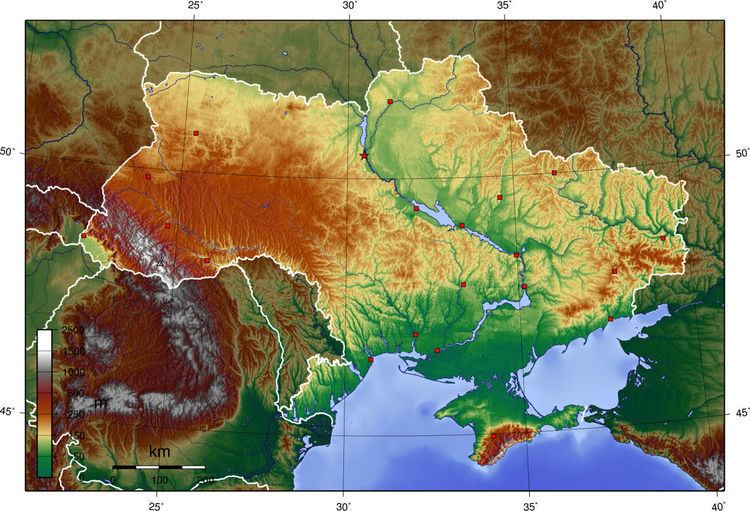 | ||
Maps of Ukraine have been produced since the late mediaeval period. During the Turkish wars, high-quality French maps were kept as state secrets amid diplomatic negotiations, while 20th-century maps have reflected the region's multiple changes of government.
Ukraine is largely absent from the maps of the Turkish manuscript mapping tradition that flourished during the fifteenth-century reign of Mehmed II the Conqueror; the Mediterranean received its own section in world maps, but the Black Sea was omitted from typical Turkish maps of the period, and the entire region of the Rus' was just a small portion of Asia between the Caspian and the Mediterranean. Two centuries later, one of the more prominent cartographers working with Ukraine was Guillaume le Vasseur, sieur de Beauplan. His 1639 descriptive map of the region was the first such map produced, and after he published a pair of Ukraine maps of different scale in 1660, his drawings were republished throughout much of Europe. A copy of de Beauplan's maps played a crucial rôle in negotiations between the Polish-Lithuanian Commonwealth and the Ottoman Empire in 1640; its depiction of the disputed Kodak Fortress was of such quality that the head Polish ambassador, Wojciech Miaskowski, deemed it dangerous to exhibit it to his Turkish counterparts. English-language maps of 1769 depicted the Crimean Khanate as part of its suzerain, the Ottoman Empire, with clear boundaries between the Muslim states in the south and the Christian states to the north. Another map from the eighteenth century, inscribed in Latin, was careful to depict a small buffer zone between Kiev and the Polish border.
In more recent history, maps of the country have reflected the tumultuous state of its political status and relations with Russia; for example, the city known as "Lvov" during the Soviet era was depicted as "Leopol" or "Lemberg" during its time in the Hapsburg realms, while post-Soviet maps produced in the Ukraine have referred to it by its endonym of "Lviv".
